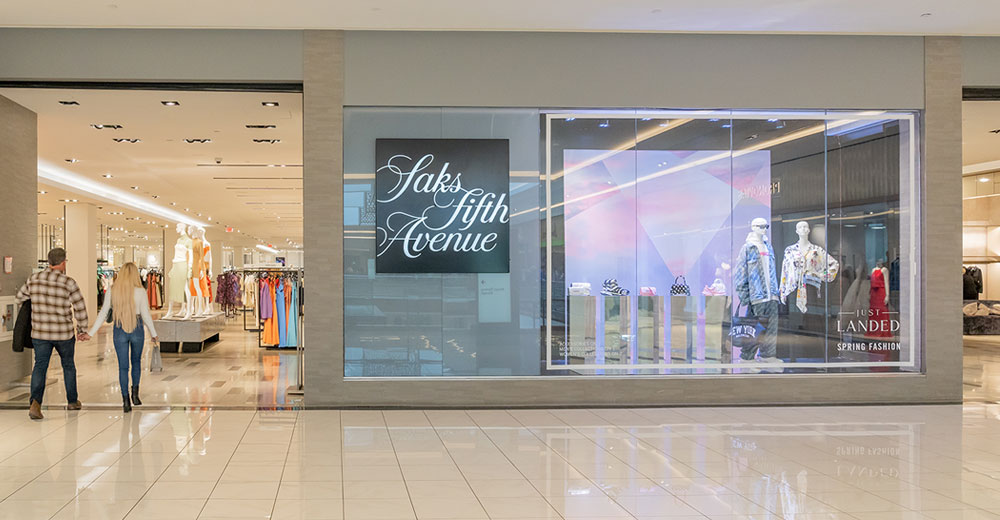Inflation may be forcing many Americans to reduce their discretionary spending, but shopping still appears to be strong among the luxury set, according to a survey released Wednesday by Saks.
Higher-income consumers continue to spend on luxury, including health, wellness and fitness products, according to the Saks Luxury Pulse, which is based on a survey of 2,137 U.S.-based consumers more than 18 years old.
“Since the pandemic, consumers have developed an increased interest in wellness,” explained Saks Fifth Avenue Senior Vice President for Marketing Strategy, Analytics and Loyalty Gaby Aiguesvives.
“While consumers were stuck in their homes with nowhere to go, many turned to at-home workouts and found ways to treat themselves through self-care,” she told the E-Commerce Times.
The Saks survey found that more than two in five consumers (41%) said they were prioritizing wellness, especially rest and relaxation, nutrition and general self-care, more now than prior to the pandemic.
Meanwhile, of those respondents prioritizing fitness, 62% said they are interested in shopping for workout wear from luxury retailers.
Wellness Through Cosmetics
“We have seen the beauty and wellness space accelerate dramatically,” observed Michael Prendergast, managing director at the Alvarez & Marsal Consumer Retail Group, a national professional services firm specializing in business transformation.
“Everyone was locked down for 12 to 18 months and now they are back out in the public,” he told the E-Commerce Times. “They want to look and feel good.”
Luxury shoppers are more interested than ever in nutritional and health products, which include luxury cosmetics, noted David Swartz, an equity analyst for consumer equity research at Morningstar Research Services in Chicago.
“People see cosmetics as part of wellness,” he told the E-Commerce Times. “It’s not just about looking good. It makes them feel better and that makes them healthier.”
“During the pandemic, people weren’t going out so instead of buying lipstick, they bought skin care cosmetics,” he added. “That seems to have continued and taken hold.”
Shoe Money
More than three-quarters of the survey participants with incomes of US$200,000 or more said they plan to purchase the same or even more luxury items in the next three months than they did in the previous three months.
Asked what they would do with an extra $500, more than a third of the respondents with incomes of $200,000 or more (38%) said they’d spend it on a vacation or travel and leisure, while 29% would spend it on shoes, accessories or handbags.
The survey also noted that more than two in five Generation X respondents (21%) and Generation Z survey participants (22%) are planning to spend more on luxury items in the next three months compared to baby boomers and the “silent generation.”
“The Gen X people are in their peak earning years,” explained Swartz. “You’d expect them to buy more luxury stuff.”
“I believe it’s a case of splurge or conserve,” Prendergast added, “with the millennials and Gen Xers in the splurge mode and the baby boomers in the conserve mode.”
He explained that Gen Xers and millennials are now coming of age in their lifetime-income generation and wealth curves. “They are old enough to have increased their incomes and created wealth for themselves, yet young enough to be willing to spend now and not worry too much about the future 10 to 15 years,” he said.
“In addition, with the current economic factors millennials and Gen Xers have most likely participated in the housing value acceleration which has created wealth or the feeling of more wealth for them,” he added.
Baby boomers are at the back end of this curve, he continued, and seem to be focused more on the next 10 to 20 years. “They seem to be more conservative in their approach, because they’re focused on retirement,” he said.
Luxury Buying Driven by Youth
S. Krish Thyagarajan, president and COO of DataWeave, an international retail data and pricing analytics firm, noted that the evidence is incontrovertible that globally, luxury shoppers are getting younger.
By 2025, millennials will account for 50% of luxury sales, he said. Currently, they are driving demand within luxury footwear in particular, as they evolve beyond handbags to embrace designer shoes as status symbols.
“Our data show that the total SKU count changed for online luxury fashion retailers for handbags versus shoes between Q4 2019 and May 2021,” he continued. “Overall, the count significantly increased — though erratically — for shoes over time from 102,232 to 183,718, while the total count for handbags remained relatively stable, around 50,000 SKUs.”
Swartz agreed that luxury brands, like other brands, are constantly trying to target younger consumers. “They want to get the 25- or 30-year-old interested in buying Dior, Gucci or whoever, so they continue to buy it for the next 30 years,” he said.
“One of the biggest things in fashion now is streetwear,” he added. “It wasn’t considered fashion in the past, and it certainly wasn’t considered luxury fashion. This is stuff worn by 12-year-olds. Now it’s one of the biggest parts of the luxury market.”
Demand Versus Inflation
Not only are the young dominating the luxury market, but so are the Chinese. “The luxury market is being driven by the Chinese,” Swartz said. “Ninety percent of the growth in the worldwide luxury market in the next few years is supposed to come from China.”
“In Japan, Europe and the United States,” he continued, “you don’t have the population growth and income mobility that you have in a country like China.”
Thyagarajan observed that while inflation remains high, so does demand for all goods, even when retailers are passing costs on to consumers.
“While consumer staples tend to behave differently than discretionary spending, we had predicted, last holiday season, that stronger than usual consumption of luxury would continue through 2021 and into 2022, much of it fueled by high savings and wage inflation, which increased many consumers’ disposable income,” he said.
Prendergast maintained that all shoppers are affected in inflationary times. “Most pull back on discretionary item spending based on the reality they have less disposable income,” he said. “If the cost of necessary home items, food, gas and utilities accelerates, there’s just less spend to go around.”
“However,” he continued, “we have seen in the past that luxury shoppers can be insulated, to a certain extent, from these pressures. These shoppers are in an income group with excess discretionary income no matter what the macro factors are.”




























































Social Media
See all Social Media